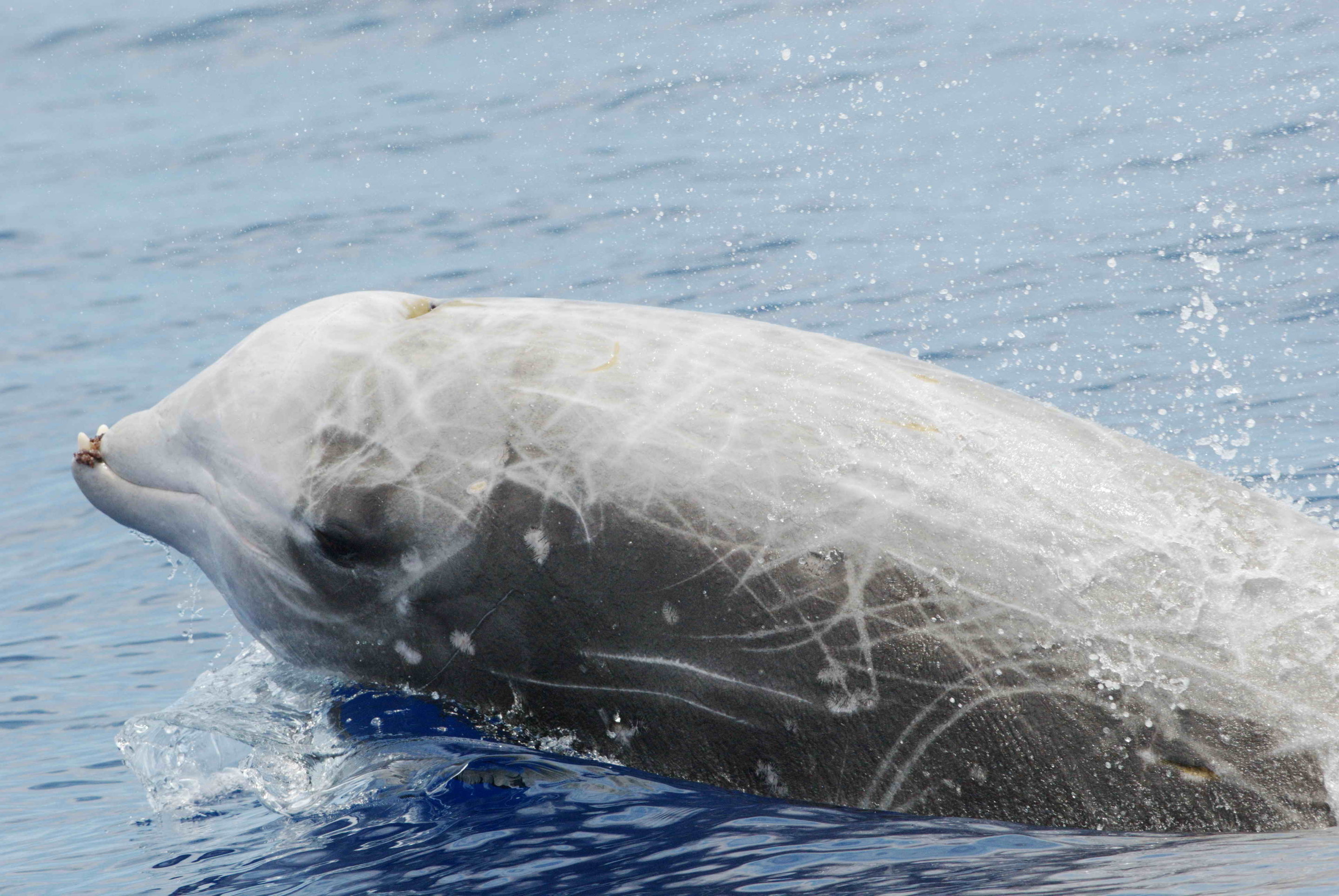Biological Characteristics of Spade-toothed Beaked Whales

Spade toothed beaked whales – Spade-toothed beaked whales, also known as Mesoplodon traversii, are a fascinating species of cetacean found in the Southern Hemisphere. These elusive creatures are known for their distinctive physical characteristics, unique feeding adaptations, and complex vocalizations.
Did you know that spade-toothed beaked whales are known for their ability to dive deep? They can reach depths of up to 2,992 feet! And speaking of depths, have you heard about the recent surge in california covid cases ?
It’s a reminder that even the deepest creatures can be affected by global events. But back to the whales, these amazing creatures have a unique beak-like snout and small spade-shaped teeth. They’re truly fascinating animals!
Physical Characteristics
Spade-toothed beaked whales are medium-sized whales, with males reaching lengths of up to 5.5 meters (18 feet) and females growing slightly larger, up to 6 meters (19.7 feet). They have a robust body with a dark gray or brownish-black coloration on their backs and lighter gray or white on their bellies. One of the most striking features of these whales is their spade-shaped teeth, which give them their name. These teeth are present only in males and are used for fighting and establishing dominance.
Spade toothed beaked whales are deep diving whales known for their unique teeth. If you’re looking for a place to catch a game and learn more about these fascinating creatures, head over to Globe Life Field. The stadium hosts the Texas Rangers baseball team and offers educational exhibits on local wildlife, including spade toothed beaked whales.
So, grab a hot dog, cheer on the Rangers, and discover the wonders of the deep sea.
Feeding Adaptations
Spade-toothed beaked whales are known for their specialized feeding habits. They primarily feed on deep-sea squid and fish, using their echolocation abilities to locate their prey. Their spade-shaped teeth are not used for chewing but rather for stunning or killing their prey before swallowing it whole.
Vocalizations, Spade toothed beaked whales
Spade-toothed beaked whales communicate using a variety of vocalizations, including clicks, whistles, and pulsed calls. These sounds are used for echolocation, social interactions, and maintaining group cohesion. They have a complex vocal repertoire, and researchers are still studying the significance of their different calls.
Habitat and Distribution of Spade-toothed Beaked Whales

Yo, let’s dive into the crib and travel plans of spade-toothed beaked whales. These guys are like underwater ninjas, hanging out in the deep, dark depths of the ocean. They’re not into shallow waters, preferring to stay below 300 meters where it’s nice and cozy.
Temperature-wise, they’re not too picky. They can handle waters ranging from a chilly 5 degrees Celsius to a balmy 25 degrees Celsius. As for where they live, they’re like global nomads, found in oceans all over the world, except for the Arctic and Antarctic waters. They’re most common in the North Atlantic and North Pacific, but they’ve been spotted as far south as New Zealand and as far north as Norway.
So, what’s their deal? Why do they hang out where they do? Well, it’s all about the food and safety. They chow down on deep-sea fish, squid, and crustaceans, so they need to be where the buffet is good. And since they’re not the biggest or strongest whales out there, they prefer to stay away from predators like killer whales and sharks.
Global Distribution and Migratory Patterns
Spade-toothed beaked whales are like ocean wanderers. They don’t have a specific migration route, but they do move around a lot, probably following their food sources or avoiding predators.
| Region | Distribution |
|---|---|
| North Atlantic | Common in deep waters off the coast of North America, Europe, and Africa |
| North Pacific | Common in deep waters off the coast of Japan, Russia, and North America |
| Southern Hemisphere | Less common, but found in deep waters off the coast of South America, Africa, and Australia |
Conservation Status and Threats to Spade-toothed Beaked Whales: Spade Toothed Beaked Whales
Spade-toothed beaked whales are classified as “data deficient” by the International Union for Conservation of Nature (IUCN). This means that there is not enough information to accurately assess their conservation status. However, there are some concerns about their populations due to potential threats such as bycatch in fishing gear, noise pollution, and habitat degradation.
Bycatch in Fishing Gear
One of the biggest threats to spade-toothed beaked whales is bycatch in fishing gear. These whales are often caught in gillnets and longlines, which are used to catch fish like tuna and swordfish. Bycatch can lead to serious injuries or death for the whales.
Noise Pollution
Noise pollution from human activities, such as shipping and military sonar, can also be harmful to spade-toothed beaked whales. These whales use sound to communicate and navigate, and loud noises can interfere with their ability to do so. Noise pollution can also cause stress and other health problems for the whales.
Habitat Degradation
Habitat degradation is another threat to spade-toothed beaked whales. These whales live in deep-water habitats that are often affected by human activities, such as oil and gas exploration and development. Habitat degradation can reduce the amount of food available to the whales and make it more difficult for them to find mates.
Conservation Measures
There are a number of measures that can be taken to mitigate the threats to spade-toothed beaked whales. These include:
– Reducing bycatch in fishing gear by using more selective fishing methods
– Reducing noise pollution from human activities
– Protecting their habitat from degradation
By taking these measures, we can help to ensure the survival of spade-toothed beaked whales for future generations.